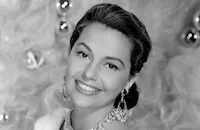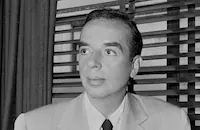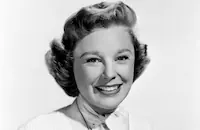Part one of what may be the most exhaustively comprehensive documentary ever made about any motion picture studio. This episode details the studio's inception in 1924, when the existing Metro, Goldwyn, and Meyer production companies merged into an entertainment juggernaut, continuing on through silent triumphs like Ben-Hur (1925) and sound milestones like "Garbo talks!" Anna Christie (1930) -- a glittering era that ended with the death of prodigy Irving G. Thalberg, the uniquely talented producer who shaped so much of the young studio's flavor. You'll see all the familiar faces like Clark Gable, Jean Harlow, Buster Keaton, Norma Shearer and Myrna Loy, but unlike other documentaries that lean heavily on theatrical releases, it's the candid footage -- like a studio birthday party thrown for then 9-year old Jackie Cooper -- that makes this documentary a must-see for movie buffs. Narrated with gusto by Patrick Stewart, who, rather strangely, is wardrobed in a dressing gown and ascot, on a set that looks like "The Sorcerer's Apprentice" segment from Fantasia (1940).
By Violet LeVoit
MGM: When the Lion Roars

Brief Synopsis
A three-part documentary series exploring the history of MGM Studios.
Cast & Crew
Read More
Frank Martin
Director
Stanley Donen
Richard Brooks
Norma Shearer
Dorothy Tuttle
Lillian Gish
Film Details
Also Known As
MGM Story, The
Genre
Documentary
Release Date
1992
Technical Specs
Duration
2h
Synopsis
A three-part documentary series exploring the history of MGM Studios.
Director
Frank Martin
Director
Cast

Stanley Donen

Richard Brooks

Norma Shearer
Dorothy Tuttle

Lillian Gish

King Vidor

Jackie Cooper
Joe Cohn
Buddy Gillespie

Richard Chamberlain

Cyd Charisse

John Huston

Johnny Weissmuller

Vincente Minnelli

Gene Kelly

Lew Ayres
Margaret Booth

Freddie Bartholomew

Katharine Hepburn

Groucho Marx

Ricardo Montalban

Charlton Heston

William Hanna

Roddy Mcdowall

George Cukor
Jim Mahoney

George Murphy
Dore Schary
Jean Speegle Howard
Jerry Maren

Debbie Reynolds
Kirk Kerkorian

Eleanor Boardman

Helen Hayes

Clarence Brown

Van Johnson

Joan Crawford

Mickey Rooney
George Gibson

Joseph Barbera
R E Turner
William Tuttle
Roger Mayer
Samuel Marx
Dorothy Raye

Luise Rainer

Joseph L. Mankiewicz

Ernest Borgnine

Myrna Loy

Maureen O'sullivan

Patrick Stewart
Narrator

June Allyson

Esther Williams
Crew
Richard Arias
Makeup
Samuel Aronson
Adr
Ted Bauser
Assistant Camera Operator
Beverly Bernacki
Other
John Berry
Production Assistant
Timothy J Borquez
Sound Supervisor
Michael Bradley
Adr Editor
Beth Brown
Other
Kevin Caffrey
Gaffer
Keith Clarke
Researcher
Keith Clarke
Writer
Clint Colver
Motion Control
Christopher Cooke
Editor
Monty Cox
Animal Trainer
Suzanne Cranfill
Costumes
Martha Cronin
Production Accountant
Virginia Ellsworth
Music Editor
Barry Ennis
Music Supervisor
Barry Ennis
Music
Rick Freeman
Sound Editor
Paul Galbraith
Art Department
Steve Goldstein
Music
Michael A Gollom
Dialogue Editor
June Abston Haymore
Makeup
Kim Hix
Set Designer
J E Jack
Sound Recordist
Tim Keating
Property Master
Chris Kennard
Key Grip
Greg Laplante
Sound Editor
Joni Levin
Producer
Candy Lewis
Animator
Mort Lindsey
Original Music
Michael Lonzo
Production
Michael Lonzo
Director Of Photography
Robert Maine
Motion Control
Cheryl Malat
Script Supervisor
Randy Malat
Researcher
Frank Martin
Writer
Samuel Marx
Consultant
Detdrich Mcclure
Production Assistant
Steve R Moore
Visual Effects Supervisor
Steve R Moore
Miniatures
Ricardo Morin
Art Director
Merrily Murray-walsh
Costume Designer
Hazel Newsom
Assistant
Jeff Nishinaka
Art Department
Vincent Paterson
Choreographer
Rudiger Poe
Assistant Director
Barbara Price
Line Producer
Ellen Rennell
Associate Editor
Randall Richards
Assistant Art Director
Jeffrey Sacino
Hair
Larry Schwartz
Original Music
Robert Sinise
Editor
Dan Stewart
Production Assistant
Traci Templin
Set Costumer
Joseph Thomas
Motion Control
John T Van Vliet
Visual Effects Supervisor
Sebastian Vega
Assistant Camera Operator
Thomas Walsh
Production Designer
Marja Webster
Makeup
David Weisman
Boom Operator
Michael Henry Wilson
Writer
Michael Henry Wilson
Production
Film Details
Also Known As
MGM Story, The
Genre
Documentary
Release Date
1992
Technical Specs
Duration
2h
Articles
MGM: When The Lion Roars Part I: The Lion Roars

MGM: When The Lion Roars Part I: The Lion Roars
Part one of what may be the most exhaustively comprehensive documentary ever made about any motion picture studio. This episode details the studio's inception in 1924, when the existing Metro, Goldwyn, and Meyer production companies merged into an entertainment juggernaut, continuing on through silent triumphs like Ben-Hur (1925) and sound milestones like "Garbo talks!" Anna Christie (1930) -- a glittering era that ended with the death of prodigy Irving G. Thalberg, the uniquely talented producer who shaped so much of the young studio's flavor. You'll see all the familiar faces like Clark Gable, Jean Harlow, Buster Keaton, Norma Shearer and Myrna Loy, but unlike other documentaries that lean heavily on theatrical releases, it's the candid footage -- like a studio birthday party thrown for then 9-year old Jackie Cooper -- that makes this documentary a must-see for movie buffs. Narrated with gusto by Patrick Stewart, who, rather strangely, is wardrobed in a dressing gown and ascot, on a set that looks like "The Sorcerer's Apprentice" segment from Fantasia (1940).
By Violet LeVoit
MGM: When the Lion Roars, Part II: The Lion Reigns Supreme
Part two of the definitive history of one of Hollywood's most essential studios, covering the studio's golden decade, the fruitful years between 1936 and 1946 that produced a staggering amount of the canon of cinematic masterpieces: The Good Earth (1937), Goodbye, Mr. Chips (1939), The Wizard Of Oz (1939), Mrs. Miniver (1942) and most unforgettably, Gone With The Wind (1939). It was the studio's era o fullest flower, but also a time for grooming new talents like a 12-year old Elizabeth Taylor in National Velvet (1944) that began to usher in a new, less studio-controlled era of movie stardom. Illuminating -- and sometimes shockingly candid -- interviews with the likes of Helen Hayes add to the insight behind the clips. Narrator Patrick Stewart is still wearing the same strange bathrobe he wore in Part I, but he has such good humor about the sometimes overwrought narration that it's easy to forgive.
By Violet LeVoit
By Violet LeVoit
MGM: When the Lion Roars, Part II: The Lion Reigns Supreme
Part two of the definitive history of one of Hollywood's most essential studios, covering the studio's golden decade, the fruitful years between 1936 and 1946 that produced a staggering amount of the canon of cinematic masterpieces: The Good Earth (1937), Goodbye, Mr. Chips (1939), The Wizard Of Oz (1939), Mrs. Miniver (1942) and most unforgettably, Gone With The Wind (1939). It was the studio's era o fullest flower, but also a time for grooming new talents like a 12-year old Elizabeth Taylor in National Velvet (1944) that began to usher in a new, less studio-controlled era of movie stardom. Illuminating -- and sometimes shockingly candid -- interviews with the likes of Helen Hayes add to the insight behind the clips. Narrator Patrick Stewart is still wearing the same strange bathrobe he wore in Part I, but he has such good humor about the sometimes overwrought narration that it's easy to forgive.
By Violet LeVoit
MGM: When the Lion Roars, Part III: The Lion in Winter
Part three of the seven-and-a-half hour documentary summing up the incredible contribution of MGM Studios to the wealth of American moviemaking. In this installment, Patrick Stewart continues his duty as narrator as the documentary traces the studio's checkered years following the birth of television, the decline of the studio system, and MGM's difficult slide into bankruptcy in the early '70s. Still, it's not a total downer -- the post-golden age of MGM brought forth some extraordinary pictures like Doctor Zhivago (1965), Cat On A Hot Tin Roof (1958), The Dirty Dozen (1967), Jailhouse Rock (1957), 2001: A Space Odyssey (1968), and Network (1976). The documentary also highlights some unfairly obscure movies like The Kissing Bandit (1948) and Battleground (1949). Viewers with the pleasure of watching all three parts of this very thorough documentary can consider themselves experts on the studio that famously boasted it provided audiences with "more stars than there are in heaven".
By Violet LeVoit
By Violet LeVoit
MGM: When the Lion Roars, Part III: The Lion in Winter
Part three of the seven-and-a-half hour documentary summing up the incredible contribution of MGM Studios to the wealth of American moviemaking. In this installment, Patrick Stewart continues his duty as narrator as the documentary traces the studio's checkered years following the birth of television, the decline of the studio system, and MGM's difficult slide into bankruptcy in the early '70s. Still, it's not a total downer -- the post-golden age of MGM brought forth some extraordinary pictures like Doctor Zhivago (1965), Cat On A Hot Tin Roof (1958), The Dirty Dozen (1967), Jailhouse Rock (1957), 2001: A Space Odyssey (1968), and Network (1976). The documentary also highlights some unfairly obscure movies like The Kissing Bandit (1948) and Battleground (1949). Viewers with the pleasure of watching all three parts of this very thorough documentary can consider themselves experts on the studio that famously boasted it provided audiences with "more stars than there are in heaven".
By Violet LeVoit
TCM Remembers Van Johnson - Important Schedule Change on TCM In Honor To Salute VAN JOHNSON
Turner Classic Movies Pays Tribute to Van Johnson on Tuesday, December 23rd with the following festival of films. This program will replace the previously scheduled movies for that day so please take note.
The new schedule for the evening of Tuesday, December 23rd will be:
8:00 PM In the Good Old Summertime
9:45 PM A Guy Named Joe
12:30 AM Thirty Seconds Over Tokyo
2:30 AM The Last Time I Saw Paris
4:30 AM Thrill of a Romance
Van Johnson (1916-2008)
Van Johnson, the boyish leading man whose clean cut, All-American appeal made him a top box-office draw for MGM during World War II, died on December 12 in Nyack, New York of natural causes. He was 92.
He was born Charles Van Dell Johnson on August 25, 1916, in Newport, Rhode Island. By his own account, his early childhood wasn't a stable one. His mother abandoned him when he was just three and his Swedish-born father offered little consolation or nurturing while he was growing up. Not surprisingly, Johnson found solace in singing and dancing lessons, and throughout his adolescence, he longed for a life in show business. After graduating high school in 1934, he relocated to New York City and was soon performing as a chorus boy on Broadway in shows such as New Faces of 1936 and eventually as an understudy in Rodgers and Hart's musical, Too Many Girls in 1939.
Johnson eventually made his way to Hollywood and landed an unbilled debut in the film version of Too Many Girls (1940). By 1941, he signed a brief contract with Warner Bros., but it only earned him a lead in a "B" programmer Murder in the Big House (1941); his contract soon expired and he was dropped by the studio. Johnson was on his way back to New York, but as luck would have it - in the truest Hollywood sense - friends Lucille Ball and Desi Arnaz introduced him to Billy Grady, a lead talent scout at MGM, which was currently Ball's new studio. Johnson was signed up and almost immediately MGM had a star on its hands.
It might have been slow going at first, with Johnson playing able support in films such as Dr. Gillespie's New Assistant and The War Against Mrs. Hadley (both 1942). By 1943 the studio capitalized on his broad smile and freckles and starred him in two of the studio's biggest hits: A Guy Named Joe and The Human Comedy. Those two films transformed him into a boxoffice draw with a huge following, particularly among teenage girls. A near fatal car accident that same year only accentuated the loyalty of his fans, and his 4-F status as the result of that accident created an opportunity for him when so many other leading actors of the era (James Stewart, Clark Gable) were off to war. Johnson was quickly promoted as MGM'sleading man in war heroics and sweet romancers on the big screen: The White Cliffs of Dover, Thirty Seconds Over Tokyo (both 1944), Thrill of a Romance, the episodic Week-End at the Waldorf (both 1945), and a musical remake of Libeled Lady entitled Easy to Wed (1946).
Hits though these were, it wasn't until after the war that Johnson began to receive more dramatic parts and better material such as supporting Katharine Hepburn and Spencer Tracy in the political farce State of the Union (1948). other significant roles included the well-modulated noir thriller The Scene of the Crime, the grim war spectacle Battleground (both 1949), the moving domestic drama Invitation (1952) in which he played a man who is paid to marry a woman (Dorothy McGuire) by her father. Before he left MGM, he closed his career out in fine form with the sweeping musical Brigadoon, co-starring Gene Kelly and Cyd Charisse; and the lilting soaper The Last Time I Saw Paris (both 1954) with Elizabeth Taylor.
After he left MGM, the parts that came Johnson's way weren't as varied, but he had his moments in The Caine Mutiny (1954), the beguiling romance drama Miracle in the Rain (1956) with Jane Wyman; and his lead performance in one of the first successful made for-TV-movies The Pied Piper of Hamelin (1957). By the '60s, Johnson returned to the stage, and played the title role in London's West End production of The Music Man. He then returned to Broadway in the drama Come on Strong. He still had a few good supporting parts, most notably as Debbie Reynolds' suitor in Norman Lear's scathing satire on marital differences Divorce American Style (1967); and television welcomed his presence on many popular shows in the '70s and '80s such as Maude, Fantasy Island, The Love Boat and of course Murder She Wrote. There was one last graceful cameo in Woody Allen's The Purple Rose of Cairo (1985), yet for the most remainder of his career, Johnson worked mainly on the dinner theater circuit before retiring from showbiz completely by the mid-90s. He is survived by a daughter, Schuyler.
by Michael T. Toole
The new schedule for the evening of Tuesday, December 23rd will be:
8:00 PM In the Good Old Summertime
9:45 PM A Guy Named Joe
12:30 AM Thirty Seconds Over Tokyo
2:30 AM The Last Time I Saw Paris
4:30 AM Thrill of a Romance
Van Johnson (1916-2008)
Van Johnson, the boyish leading man whose clean cut, All-American appeal made him a top box-office draw for MGM during World War II, died on December 12 in Nyack, New York of natural causes. He was 92.
He was born Charles Van Dell Johnson on August 25, 1916, in Newport, Rhode Island. By his own account, his early childhood wasn't a stable one. His mother abandoned him when he was just three and his Swedish-born father offered little consolation or nurturing while he was growing up. Not surprisingly, Johnson found solace in singing and dancing lessons, and throughout his adolescence, he longed for a life in show business. After graduating high school in 1934, he relocated to New York City and was soon performing as a chorus boy on Broadway in shows such as New Faces of 1936 and eventually as an understudy in Rodgers and Hart's musical, Too Many Girls in 1939.
Johnson eventually made his way to Hollywood and landed an unbilled debut in the film version of Too Many Girls (1940). By 1941, he signed a brief contract with Warner Bros., but it only earned him a lead in a "B" programmer Murder in the Big House (1941); his contract soon expired and he was dropped by the studio. Johnson was on his way back to New York, but as luck would have it - in the truest Hollywood sense - friends Lucille Ball and Desi Arnaz introduced him to Billy Grady, a lead talent scout at MGM, which was currently Ball's new studio. Johnson was signed up and almost immediately MGM had a star on its hands.
It might have been slow going at first, with Johnson playing able support in films such as Dr. Gillespie's New Assistant and The War Against Mrs. Hadley (both 1942). By 1943 the studio capitalized on his broad smile and freckles and starred him in two of the studio's biggest hits: A Guy Named Joe and The Human Comedy. Those two films transformed him into a boxoffice draw with a huge following, particularly among teenage girls. A near fatal car accident that same year only accentuated the loyalty of his fans, and his 4-F status as the result of that accident created an opportunity for him when so many other leading actors of the era (James Stewart, Clark Gable) were off to war. Johnson was quickly promoted as MGM'sleading man in war heroics and sweet romancers on the big screen: The White Cliffs of Dover, Thirty Seconds Over Tokyo (both 1944), Thrill of a Romance, the episodic Week-End at the Waldorf (both 1945), and a musical remake of Libeled Lady entitled Easy to Wed (1946).
Hits though these were, it wasn't until after the war that Johnson began to receive more dramatic parts and better material such as supporting Katharine Hepburn and Spencer Tracy in the political farce State of the Union (1948). other significant roles included the well-modulated noir thriller The Scene of the Crime, the grim war spectacle Battleground (both 1949), the moving domestic drama Invitation (1952) in which he played a man who is paid to marry a woman (Dorothy McGuire) by her father. Before he left MGM, he closed his career out in fine form with the sweeping musical Brigadoon, co-starring Gene Kelly and Cyd Charisse; and the lilting soaper The Last Time I Saw Paris (both 1954) with Elizabeth Taylor.
After he left MGM, the parts that came Johnson's way weren't as varied, but he had his moments in The Caine Mutiny (1954), the beguiling romance drama Miracle in the Rain (1956) with Jane Wyman; and his lead performance in one of the first successful made for-TV-movies The Pied Piper of Hamelin (1957). By the '60s, Johnson returned to the stage, and played the title role in London's West End production of The Music Man. He then returned to Broadway in the drama Come on Strong. He still had a few good supporting parts, most notably as Debbie Reynolds' suitor in Norman Lear's scathing satire on marital differences Divorce American Style (1967); and television welcomed his presence on many popular shows in the '70s and '80s such as Maude, Fantasy Island, The Love Boat and of course Murder She Wrote. There was one last graceful cameo in Woody Allen's The Purple Rose of Cairo (1985), yet for the most remainder of his career, Johnson worked mainly on the dinner theater circuit before retiring from showbiz completely by the mid-90s. He is survived by a daughter, Schuyler.
by Michael T. Toole
TCM Remembers Van Johnson - Important Schedule Change on TCM In Honor To Salute VAN JOHNSON
Turner Classic Movies Pays Tribute to Van Johnson on Tuesday, December 23rd with the following festival of films. This program will replace the previously scheduled movies for that day so please take note.
The new schedule for the evening of Tuesday, December 23rd will be:
8:00 PM In the Good Old Summertime
9:45 PM A Guy Named Joe
12:30 AM Thirty Seconds Over Tokyo
2:30 AM The Last Time I Saw Paris
4:30 AM Thrill of a Romance
Van Johnson (1916-2008)
Van Johnson, the boyish leading man whose clean cut, All-American appeal made him a top box-office draw for
MGM during World War II, died on December 12 in Nyack, New York of natural causes. He was 92.
He was born Charles Van Dell Johnson on August 25, 1916, in Newport, Rhode Island. By his own account, his
early childhood wasn't a stable one. His mother abandoned him when he was just three and his Swedish-born
father offered little consolation or nurturing while he was growing up. Not surprisingly, Johnson found
solace in singing and dancing lessons, and throughout his adolescence, he longed for a life in show business.
After graduating high school in 1934, he relocated to New York City and was soon performing as a chorus boy on
Broadway in shows such as New Faces of 1936 and eventually as an understudy in Rodgers and Hart's
musical, Too Many Girls in 1939.
Johnson eventually made his way to Hollywood and landed an unbilled debut in the film version of Too Many
Girls (1940). By 1941, he signed a brief contract with Warner Bros., but it only earned him a lead in a
"B" programmer Murder in the Big House (1941); his contract soon expired and he was dropped by the
studio. Johnson was on his way back to New York, but as luck would have it - in the truest Hollywood sense -
friends Lucille Ball and Desi Arnaz introduced him to Billy Grady, a lead talent scout at MGM, which was
currently Ball's new studio. Johnson was signed up and almost immediately MGM had a star on its
hands.
It might have been slow going at first, with Johnson playing able support in films such as Dr. Gillespie's
New Assistant and The War Against Mrs. Hadley (both 1942). By 1943 the studio capitalized on his
broad smile and freckles and starred him in two of the studio's biggest hits: A Guy Named Joe and
The Human Comedy. Those two films transformed him into a boxoffice draw with a huge following,
particularly among teenage girls. A near fatal car accident that same year only accentuated the loyalty of
his fans, and his 4-F status as the result of that accident created an opportunity for him when so many other
leading actors of the era (James Stewart, Clark Gable) were off to war. Johnson was quickly promoted as
MGM'sleading man in war heroics and sweet romancers on the big screen: The White Cliffs of Dover,
Thirty Seconds Over Tokyo (both 1944), Thrill of a Romance, the episodic Week-End at the
Waldorf (both 1945), and a musical remake of Libeled Lady entitled Easy to Wed
(1946).
Hits though these were, it wasn't until after the war that Johnson began to receive more dramatic parts and
better material such as supporting Katharine Hepburn and Spencer Tracy in the political farce State of the
Union (1948). other significant roles included the well-modulated noir thriller The Scene of the
Crime, the grim war spectacle Battleground (both 1949), the moving domestic drama Invitation
(1952) in which he played a man who is paid to marry a woman (Dorothy McGuire) by her father. Before he left
MGM, he closed his career out in fine form with the sweeping musical Brigadoon, co-starring Gene Kelly
and Cyd Charisse; and the lilting soaper The Last Time I Saw Paris (both 1954) with Elizabeth
Taylor.
After he left MGM, the parts that came Johnson's way weren't as varied, but he had his moments in The Caine
Mutiny (1954), the beguiling romance drama Miracle in the Rain (1956) with Jane Wyman; and his lead
performance in one of the first successful made for-TV-movies The Pied Piper of Hamelin (1957). By
the '60s, Johnson returned to the stage, and played the title role in London's West End production of The
Music Man. He then returned to Broadway in the drama Come on Strong. He still had a few good
supporting parts, most notably as Debbie Reynolds' suitor in Norman Lear's scathing satire on marital
differences Divorce American Style (1967); and television welcomed his presence on many popular shows
in the '70s and '80s such as Maude, Fantasy Island, The Love Boat and of course Murder
She Wrote. There was one last graceful cameo in Woody Allen's The Purple Rose of Cairo (1985), yet
for the most remainder of his career, Johnson worked mainly on the dinner theater circuit before retiring from
showbiz completely by the mid-90s. He is survived by a daughter, Schuyler.
by Michael T. Toole
MGM: When the Lion Roars - January 2009 DVD Release - MGM: When the Lion Roars, the 1992 Emmy Award-Winning Documentary on MGM, Receives a DVD Release in January
The movies changed forever on April 24, 1924 when a new studio,
Metro-Goldwyn-Mayer, opened in Hollywood and soon assembled "more stars
than there are in the heavens."
Patrick Stewart hosts the debut DVD version of MGM: When the Lion Roars, an enthralling three-part Emmy Award winning TV series (Best Informational Series) that tells the story of the legendary "Dream Factory's" reign as the movies' class act and entertainment empire.
Louis B. Mayer, Joan Crawford, Stanley Donen, Clark Gable, Judy Garland, Jean Harlow, Helen Hayes, Katharine Hepburn, Gene Kelly, Myrna Loy, Mickey Rooney, Dore Schary, Norma Shearer, Elizabeth Taylor, Irving Thalberg, Spencer Tracy and Esther Williams are some of the MGM greats featured in memorable film clips, rare interviews and behind-the-scenes footage.
MGM: When the Lion Roars is a "mother lode" for film fans, profiling perfectionist moguls, glamorous and charismatic actors, innovative filmmakers and landmark movies of drama, romance, sweeping epic adventure and, of course, singing and dancing.
Patrick Stewart hosts the debut DVD version of MGM: When the Lion Roars, an enthralling three-part Emmy Award winning TV series (Best Informational Series) that tells the story of the legendary "Dream Factory's" reign as the movies' class act and entertainment empire.
Louis B. Mayer, Joan Crawford, Stanley Donen, Clark Gable, Judy Garland, Jean Harlow, Helen Hayes, Katharine Hepburn, Gene Kelly, Myrna Loy, Mickey Rooney, Dore Schary, Norma Shearer, Elizabeth Taylor, Irving Thalberg, Spencer Tracy and Esther Williams are some of the MGM greats featured in memorable film clips, rare interviews and behind-the-scenes footage.
MGM: When the Lion Roars is a "mother lode" for film fans, profiling perfectionist moguls, glamorous and charismatic actors, innovative filmmakers and landmark movies of drama, romance, sweeping epic adventure and, of course, singing and dancing.
MGM: When the Lion Roars - January 2009 DVD Release - MGM: When the Lion Roars, the 1992 Emmy Award-Winning Documentary on MGM, Receives a DVD Release in January
The movies changed forever on April 24, 1924 when a new studio,
Metro-Goldwyn-Mayer, opened in Hollywood and soon assembled "more stars
than there are in the heavens."
Patrick Stewart hosts the debut DVD version of MGM: When the Lion
Roars, an enthralling three-part Emmy Award winning TV series (Best
Informational Series) that tells the story of the legendary "Dream
Factory's" reign as the movies' class act and entertainment empire.
Louis B. Mayer, Joan Crawford, Stanley Donen, Clark Gable, Judy Garland,
Jean Harlow, Helen Hayes, Katharine Hepburn, Gene Kelly, Myrna Loy, Mickey
Rooney, Dore Schary, Norma Shearer, Elizabeth Taylor, Irving Thalberg,
Spencer Tracy and Esther Williams are some of the MGM greats featured in
memorable film clips, rare interviews and behind-the-scenes
footage.
MGM: When the Lion Roars is a "mother lode" for film fans,
profiling perfectionist moguls, glamorous and charismatic actors,
innovative filmmakers and landmark movies of drama, romance, sweeping epic
adventure and, of course, singing and dancing.













